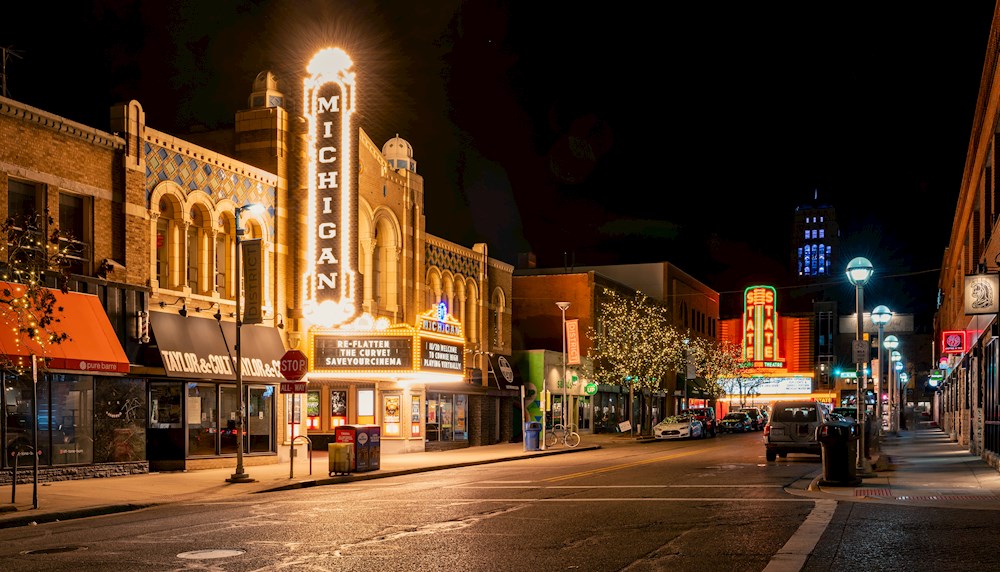- Sector Scan
Ann Arbor Debuts on the List of Top 10 Medium-Sized Arts Communities in 2022
- Posted Apr 13, 2023
3-minute read
According to the latest Arts Vibrancy Index Report from SMU DataArts, Ann Arbor, MI makes the list of the top 40 most arts-vibrant communities in the nation for the first time. With scores among the top 5% on arts dollars and government support, this medium-sized community shows particular strength in total compensation paid to arts and cultural employees per capita.

Local arts leaders express pride in the community’s unique blend of urban and college life. “Invigorated by the University of Michigan's investment in the region, Ann Arbor is a cultural hub due to the diverse set of individuals drawn to the campus to study, teach, and work,” states Rob Swetlic of CultureSource. Young creatives abound in Ann Arbor, many of them like-minded individuals with shared liberal politics, which local arts leaders recognize has had a large influence on the community’s diverse artistic landscape.
With a total of 91 arts and cultural organizations, Ann Arbor is home to performing arts groups, nature centers, traditional museums, galleries, and performance venues, many of which cluster within walking distance of the central downtown area where locals and visitors can always find something going on. Even throughout the many months of COVID-conscious measures, these arts organizations found innovative ways to serve the community.
Like communities across the country, COVID-19 led to major changes in how these local arts organizations engaged with their audiences. Arts organizations’ use of digital technology and innovative programming formats played a significant role in the ability to reach diverse audiences online throughout these shifts. In the summer of 2020, Ann Arbor Art Center created a suite of free and low-cost online art activities to try from home, including craft tutorials, challenges, and virtual galleries. Their Artbox program, providing boxes of art supplies to be used at home or in other settings outside the arts center continues to be a pivotal component of their educational outreach.
The University of Michigan, School of Music, Theatre & Dance also made significant strides in virtual accessibility through the first-ever fully online production season in the fall of 2020. “COVID-19 may have stopped us from having audiences, but it hasn’t stopped SMTD students from creating,” said Paul Hunter, Production Manager for the school’s University Productions.
Even through re-opening and the gradual return of in-person programming, there is a new sense of possibility around enhancing the artistic experience through technology. Recently, an art exhibition at the University of Michigan explored how to bring artwork to life through augmented reality. In the first exhibit of its kind, artist Camila Magrane explains that her work lives in two worlds; while the physical pieces are fully formed artworks by themselves, the virtual content you receive by unlocking the AR experience through your tablet or phone act as “thoughts of those works.”
Despite high scores in arts employee compensation and employment levels, the pandemic still marks a devasting impact on the sector. In response, Creative Washtenaw, an advocacy group formerly known as the Arts Alliance, asked the city to consider putting $2.4 million of its American Rescue Plan Act (ARPA) funds toward the financial recovery of Ann Arbor’s arts and creative industry. Only a fraction of this ask was awarded. In an update on April 6, 2022, the city of Ann Arbor announced $500,000 of the $24.2 million in federal ARPA funds to be allocated to the arts. While disappointing, all hope was not lost when it came to recovery funding for the arts.
The Shuttered Venue Operators Grant program through the U.S. Small Business Administration channeled over $10 million to Ann Arbor organizations and businesses such as the Michigan Theater, The Ark, Blind Pig, Necto, Ann Arbor Film Festival, Ann Arbor Summer Festival, Ann Arbor Symphony Orchestra, Kerrytown Concert House and others.
According to local arts leaders, an important source of funding for many organizations is the Ann Arbor Area Community Foundation, which adjusted its focus to relief and recovery efforts in addition to its long-time efforts of ensuring consistent investment and redevelopment of the cultural sector.
The resourcefulness, resiliency, and receptivity of local arts organizations and advocates throughout the last few years underscore the strengths that led to Ann Arbor’s debut on the 2022 Arts Vibrancy Index Report.
Thank you to Rob Swetlic of CultureSource for their thoughtful contributions to the making of this article.
ABOUT THE ARTS VIBRANCY INDEX
The Arts Vibrancy Index examines the level of supply, demand, and government support of the arts in more than 900 communities across the country. Accompanied by an interactive Arts Vibrancy Map that reveals the arts-vibrancy score of every county in the U.S., the Index lists, in alphabetical order, the 20 most arts-vibrant large cities, the 10 most arts-vibrant medium cities, and the 10 most arts-vibrant small cities. In this year’s Index, the first since 2020, four communities debut on the lists, and an additional five return after an absence of at least three years.



Comments
Leave yours below.